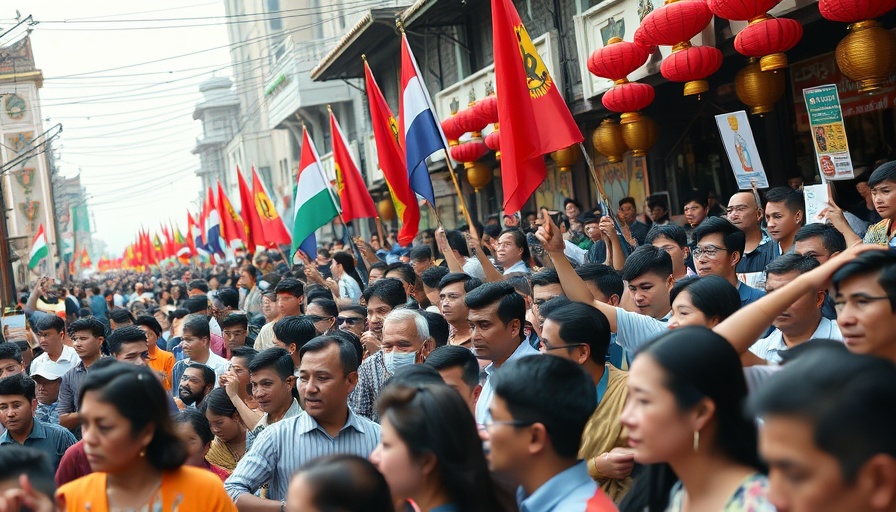
Dreams of a Monarch: The Yearning for the Past in Modern Nepal
Nepal is a nation known for its rich tapestry of culture and history. However, a distinct yearning for the past has emerged among some of its citizens, as aspirations for a return to monarchical rule create a complex narrative against the backdrop of contemporary democratic values. The recent royalist protests have reignited discussions about a king's potential return, sparking debates that resonate throughout the socio-political fabric of the country.
The Story Behind the Protests: A Kingdom Divided
In mid-September, hundreds of royalist supporters took to the streets of Kathmandu, chanting slogans calling for the former crown prince to reclaim the throne. This movement isn’t merely a nostalgic fantasy; it’s rooted in a palpable discomfort with the current political environment, which many feel is marked by instability and corruption. These sentiments draw on historical contexts where the monarchy was perceived as a stabilizing force.
A Historical Lens: The Monarchy's Role in Nepal
To understand the current royalist resurgence, it’s essential to look back at the monarchy's historical significance in Nepal. Prior to 2008, when the monarchy was officially abolished, the kings of Nepal wielded considerable power, influencing not just governance but also the cultural and social dynamics of the nation. The dissolution of the monarchy in favor of a federal democratic republic did not come without its challenges, as the country has since grappled with political fragmentation and unrest.
Politics of Nostalgia: Emotional and Human Connections
For many, the longing for a monarch evokes not just a political stance but a deep emotional connection. This nostalgia captures an era remembered fondly by some for its perceived stability. As Kathmandu's streets buzz with distinct generations expressing contrasting views about these royalist ideals, the protests reveal what lies beneath the surface: a community divided by personal experiences, historical consciousness, and aspirations for the future.
Diverse Perspectives: The Royalists Versus Republicans
The conversations surrounding the monarchy reflect deeply ingrained divisions within Nepalese society. Royalists argue for a king as a unifying figure above partisan politics, while republicans maintain that the monarchy is an obsolete institution. This ongoing discourse feeds into a larger narrative regarding identity and governance, questioning what constitutes legitimacy in today's political landscape.
Future Trends: Potential Scenarios for Nepal
Looking forward, the landscape of political power in Nepal appears fluid. The call for a monarchy, though resonant for some, also raises questions about the sustainability of such movements. Will the royalist advocates gain further traction amid political discontent, or will they fade as the country seeks to unify under a more contemporary model of governance? Experts suggest that the answer may hinge on how effectively the current system can address the root causes of dissatisfaction among its citizens.
Practical Insights: Navigating Political Change
Citizens in Nepal face crucial decisions as they navigate their complex political climate. Engaging in the electoral process, advocating for transparency, and participating in civic dialogue are critical actions for promoting positive change. Building bridges between differing perspectives may be essential for national unity, underscoring the importance of understanding both historical context and modern implications.
Conclusion: Bridging Past and Future in Nepal
The ongoing dialogue surrounding the potential return of a king reflects more than just political sentiment; it unveils the intricate ties between history, identity, and the aspirations of a people. Whether looking back fondly to a monarchical past or embracing a republic’s values, the journey ahead for Nepal is one of reconciliation, hopeful visions, and intricate discussions on governance moving forward.
 Add Row
Add Row  Add
Add 




Write A Comment